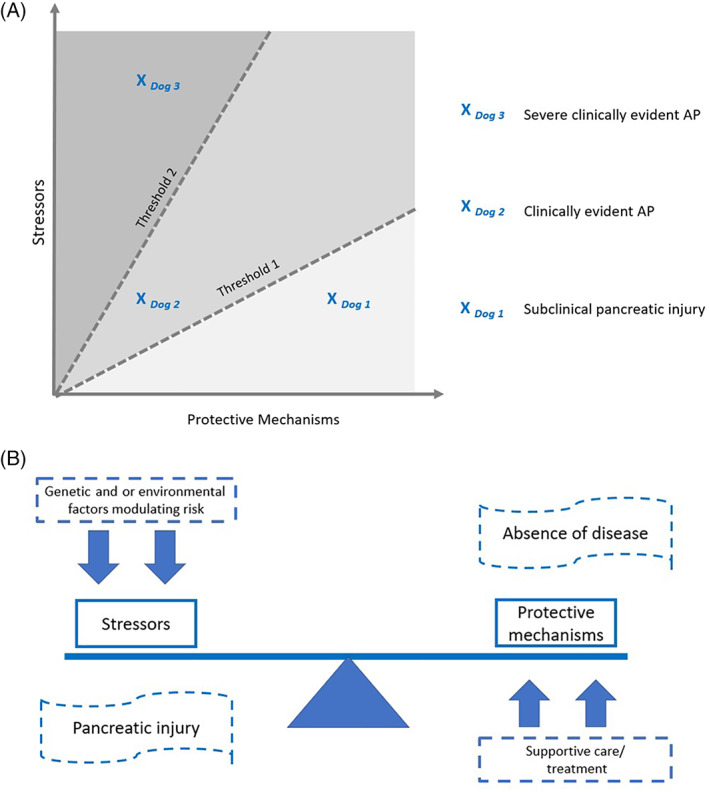FIGURE 1.

(A) Thresholds in the development of pancreatitis. A graphical representation of the critical threshold theory in which the balance between stressors and protective mechanisms determines whether clinical disease is present (threshold 1) and if so, its severity (threshold 2). Dog 1 and dog 2 have been exposed to the same stressor; however, dog 1 has greater protective mechanisms and as such, the disease burden falls below threshold 1 and the dog develops subclinical pancreatic injury. In contrast, dog 2's disease burden is above threshold 1 and the dog develops clinically evident AP. Similarly, dogs 2 and 3 have the same level of protective mechanisms, but the stressors are greater in dog 3. The disease burden for dog 3 is therefore above threshold 2 and the dog develops clinically severe AP. As depicted in (B) this balance is also likely influenced by factors such as supportive care, genetic and environmental factors, and amplification systems. While thresholds 1 and 2 are represented as dashed lines in the figure, we suspect that the thresholds are more fluid and vary between individuals. This figure was adapted with permission from Barreto et al. Gut. 2021;70:194‐203. (B) A balance between protective mechanisms, stressors, and modulating factors determines the risk of pancreatitis in each individual dog. A schematic representation of the fine balance between stressors and protective mechanisms that determine whether pancreatic injury and inflammation occurs in an individual dog. Note that genetic and or environmental factors on one side and supportive care on the other can modulate the risk toward or away from pancreatic injury, respectively
